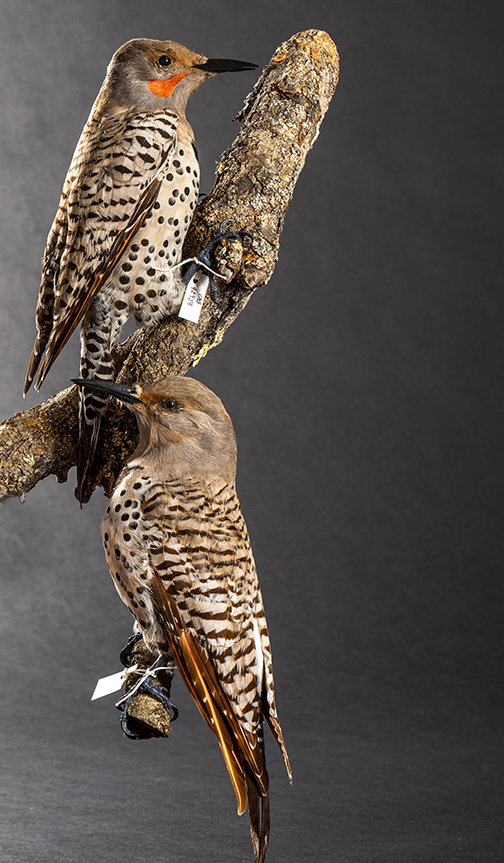
Wonders No Longer Hidden at California Academy of Sciences
Prepare to Enter the Fascinating World of Rare Specimens and Insects
by Dave Boitano
“Hidden Wonders: Inside the Academy’s Collections” and "Bugs" on display through January 22, 2023 at the California Academy of Sciences.
Below the main floor of the California Academy of Sciences lies a treasure trove of scientific value. Floor to ceiling multi-drawer metal cabinets and other containers hold a wealth of biological specimens-an estimated 46 million in all-collected by scientists or donated for more than a century. Most have never been seen by the general public. Until now.
Academy officials have opened “Hidden Wonders: Inside the Academy’s Collections,” a new exhibit which displays some of the most interesting preserved animals, plants and fossils in the museum’s vast holdings.
The objects themselves are eye catching, but the way they are used to solve scientific mysteries is a story worth telling. And “Hidden Wonders’’ does it well.
Established in 1853, the academy became a scientific institution known for sponsoring expeditions including trips to the Galapagos Islands at the turn of the century.

Blue Coral, Heliopora. This coral was collected in 1952 in a region later used for atomic bomb testing. This specimen gives us a rare glimpse into ocean conditions before the bomb testing. Main image: Northern Flicker, Colaptes aurat. Photos by Gayle Laird © California Academy of Sciences.
Unfortunately, most of the early collections were destroyed in the 1906 San Francisco earthquake and fire, but soon after, researchers resumed their work and the collection began to grow again.
Academy scientists are always willing to share their discoveries with the public, but most specimens couldn’t be shown in the building’s general exhibit areas without being damaged by bright lights or humidity.
“The research collections we need to preserve for perpetuity which means that we tend to keep them in dark locked cabinets,” said academy Dean of Science and Collections Shannon Bennett.
“We would love to have the public see them but because of the conditions on the public floor that has not always been tenable.”
Bennett spoke in the new climate-controlled gallery which she refers to as a “black box.” The room was a former laboratory visible to the public via glass walls. It’s cold inside because lower temperatures are necessary to remove damaging moisture from the air. The room’s lights are set to prevent the specimens from fading.
It’s an impressive display of 800 separate items. The skeleton of a snarling prehistoric sabretooth cat-ironically named a “Smilodon”-is perched in one section of the room. A Galapagos Tortoise and other specimens from century-old expeditions are visible, along with birds preserved through the art of taxidermy.
The collection also includes avian paintings by the renowned 19th century artist John James Audubon. More previously unseen specimens will highlight the gallery in years to come, according to Bennett.
“These 800 specimens are just the tip of the iceberg,” she said. “We have 46 million or more specimens in our collection in this building and ultimately we will be turning this gallery over and bringing more of them to light.”
But the specimens have a greater value than just being display objects. Using modern DNA techniques, scientists can extract valuable data on changes in climate, species evolution and diseases when taking samples under supervised conditions. “We can now get genetic information from specimens that are hundreds of years old, Bennett said, “It’s tiny and fragmented but it’s amazing.”
Using samples from a collection of Galapagos Finches, researchers were able to determine that the birds died from a disease introduced by a parrot not native to the island. “A piratical parrot that sat on someone’s shoulder when they visited that island,” Bennett said. “We would never know that is what happened if we did not have our collections.”
“Hidden Wonders” Exhibit Design Manager Julia Louie stressed that the display helps visitors understand what goes on behind the scenes with this library of biological items.
“It’s not just an assorted display of cool stuff, “she said. “We are really using these collections to show their value as scientific tools and how scientists are doing cutting-edge research using these tools.”
"Bugs"

Visitors help large-scale models of Japanese honeybees warm up their hive in the Swarms chamber. Photo by Mike O’Neill © Te Papa 2016.
Most of us think of insects as pests. They sting, crawl all over your picnic lunch and buzz around the room, generally irritating everyone until hunted down with a flyswatter. But “Bugs” a new exhibit at the California Academy of Sciences, may make visitors think of insects in a whole new way. And at the very least, they aren’t likely to forget the experience.
Created by the TE Papa Tongarewa Museum of New Zealand, the exhibit is a multi-media, eye popping journey though the arthropod kingdom that makes Alice’s journey down the rabbit hole look tame by comparison.
Multi-colored steampunk-style displays play videos of flying insects. Walk into an enclosed chamber and you are confronted by a larger-than-life orchid mantis perched menacingly before killing her hapless victim. In another chamber, dreamy new age music plays as a giant egg-shaped sphere opens, revealing 3-D dragonfly models performing a flickering dance created by a Zoetrope machine.
And there’s plenty of hands-on activities, like helping honeybees heat up to kill a marauding Japanese hornet invading a hive or testing your reflexes to see if you can match the speed at which a mantis strikes the death blow.
It’s an overwhelming and somewhat surreal experience. Along the way, visitors learn how silk is created, how insects swarm and the significance of a certain kind of moth to the Maori, the indigenous people of New Zealand.
While the exhibit is unusual and engaging, the high level of showmanship may distract from the valuable insect information it tries to impart.
Etymologist Lauren Esposito studies scorpions and spiders. Insects have a complex world all their own in which they interact with each other and their prey.
While it is normal to be a bit irritated by insects, exhibits like “Bugs” help visitors develop an appreciation for the world of flying, buzzing, crawling and stinging creatures, she said.
“They are not scary anymore. They are not pests anymore. Instead they are something to be wondered at and appreciated because of the unique adaptations they have developed over the years and the challenges they have faced living on earth.”
The museum’s hours are 9:30 a.m.-5 p.m. Monday-Saturday and 11 a.m.-5 p.m. on Sunday. Exhibits, programs and shows are free after general admission fee. For ticket prices and more information, visit calacademy.org or call 415-379-8000
Dave Boitano's website keeps readers up to date with the latest exhibits of the Academy and other institutions, informative profiles of scientists and ground-breaking research.


